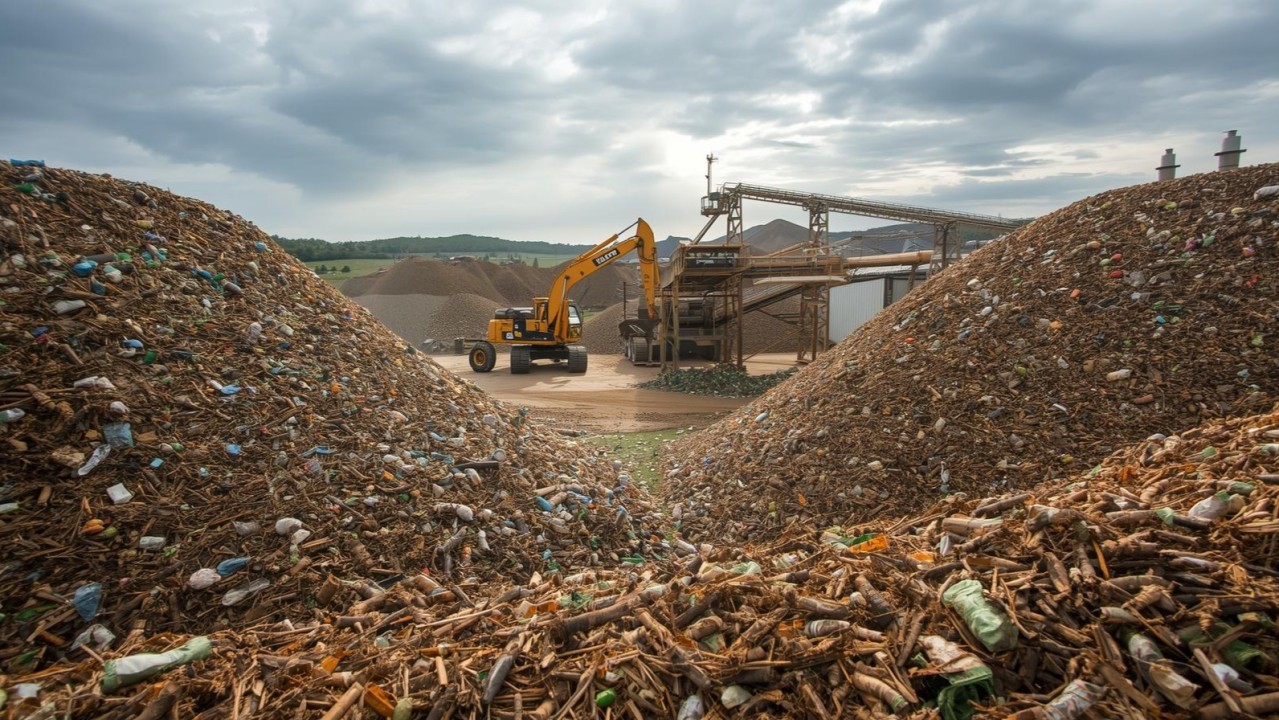The composting industry in the United States is experiencing a quiet but powerful transformation. As environmental consciousness grows and state mandates expand, composting infrastructure is scaling up across the nation—and with it, a remarkable trend is emerging: more composters are accepting compostable packaging in their operations than ever before.
Expanding Infrastructure: The Numbers Tell the Story
Between 2018 and 2023, the number of full-scale food waste composting facilities in the United States increased by 8%, growing from 185 to 200 facilities. While this may seem like modest growth, it represents a significant shift in an industry that has historically focused primarily on yard waste. Even more impressive is the surge in community and captive composting sites during this same period, demonstrating that composting infrastructure is expanding across the entire scale spectrum—from neighborhood programs to industrial operations.
Facilities collectively produced over 6 million tons of finished compost in 2023, up from approximately 5.2 million tons in 2021—a nearly 16% increase in just two years. This growth reflects not only expanded capacity but also increased demand for sustainable waste solutions across agriculture, horticulture, and land management sectors.
The Geographic Landscape
Nearly half of all full-scale food waste composting facilities are concentrated in just seven states: California (35), New York (14), Colorado (13), Pennsylvania (10), Washington (9), Texas (9), and North Carolina (9). California leads the nation in composting infrastructure, driven in part by aggressive state legislation and environmental mandates.
However, significant gaps remain. Ten states—including Alabama, Delaware, Kansas, Mississippi, and West Virginia—are considered “food waste composting deserts,” lacking any full-scale composting operations. This uneven distribution highlights both the progress made and the work still ahead.
The Compostable Packaging Revolution
Perhaps the most encouraging trend in recent years is the growing acceptance of compostable packaging at composting facilities. In 2023, 71% of facilities (142 out of 200) accepted compostable food-contact packaging, up from just 58% in 2018. This 13-percentage-point increase represents a fundamental shift in industry attitudes and capabilities.
Even more striking is the acceptance of certified compostable bioplastics packaging. In 2023, 87 out of 141 facilities (62%) accepted certified compostable foodservice ware, compared to just 49 out of 103 facilities (48%) in 2018. This growth reflects increasing trust in certification programs like those offered by the Biodegradable Products Institute (BPI) and field-testing services that help facilities confidently accept these materials.
What Composters Are Accepting
Among facilities that accept compostable packaging:
- 83% accept food-soiled paper and pizza boxes
- 66% accept certified compostable bioplastic liner bags used for kitchen collection
- 62% accept certified compostable foodservice ware
- 61% accept kraft paper bags
- 50% accept molded fiber containers
Targeted Investment Accelerates Growth
Recent collaborative efforts are accelerating infrastructure development. In September 2025, the Composting Consortium—managed by Closed Loop Partners’ Center for the Circular Economy, in partnership with the Biodegradable Products Institute and the US Composting Council—announced grant funding for eight municipal and composter-led projects across the United States to advance composting infrastructure and recovery of food-contact compostable packaging.
These funded projects span from coast to coast:
Expanding Access:
- Washtenaw County, Michigan is piloting drop-off sites to serve households without curbside collection, with potential to divert up to 45,000 pounds of food waste and compostable packaging
- Rubber City Reuse in Northeast Ohio is launching 15 organics drop-off sites across four counties, serving up to 1.2 million residents
Increasing Processing Capacity:
- Compost Colorado is doubling processing capacity as the only front-range compost producer in Colorado that accepts compostable packaging
- Bennett Compost in Philadelphia is updating their site to begin accepting certified food-contact compostable packaging for the first time at their Lawncrest facility
- Veteran Compost in Alexandria, Virginia is installing new infrastructure to double processing capacity to 2 million pounds per year
State Mandates Drive Demand
Legislative action at the state level continues to fuel infrastructure growth. California’s organic waste law, which aims to reduce organic waste disposal by 75% by 2030, has expanded to include more businesses in 2024 and 2025. Washington State ramped up its organics management requirements in 2025, requiring businesses producing at least 4 cubic yards of food and yard waste to manage their organic waste through means other than landfilling.
These mandates create a ripple effect: as more businesses must divert organic waste, composting facilities face increased demand and have greater incentive to accept diverse feedstocks, including compostable packaging.
The Path Forward
The composting industry stands at an inflection point. While current infrastructure processes only up to 4% of the 66 million tons of food waste generated annually in the United States, the trajectory is promising. Facilities report available capacity, and 38% are planning to expand their existing sites or open additional facilities.
As Rhodes Yepsen, Executive Director of BPI, notes, targeted grant programs and industry collaboration are “building a foundation for a circular bioeconomy that works in practice and eventually at scale,” transforming food scraps and compostable packaging from everyday waste into valuable soil amendments while creating jobs and fostering resilient communities.
The growing acceptance of compostable packaging is more than just a statistic—it’s a signal that the infrastructure, expertise, and confidence necessary for a circular economy are taking root across America. With continued investment, supportive legislation, and industry collaboration, the next decade promises even more dramatic growth in composting capacity and compostable packaging acceptance.
The revolution is underway, one facility at a time.
